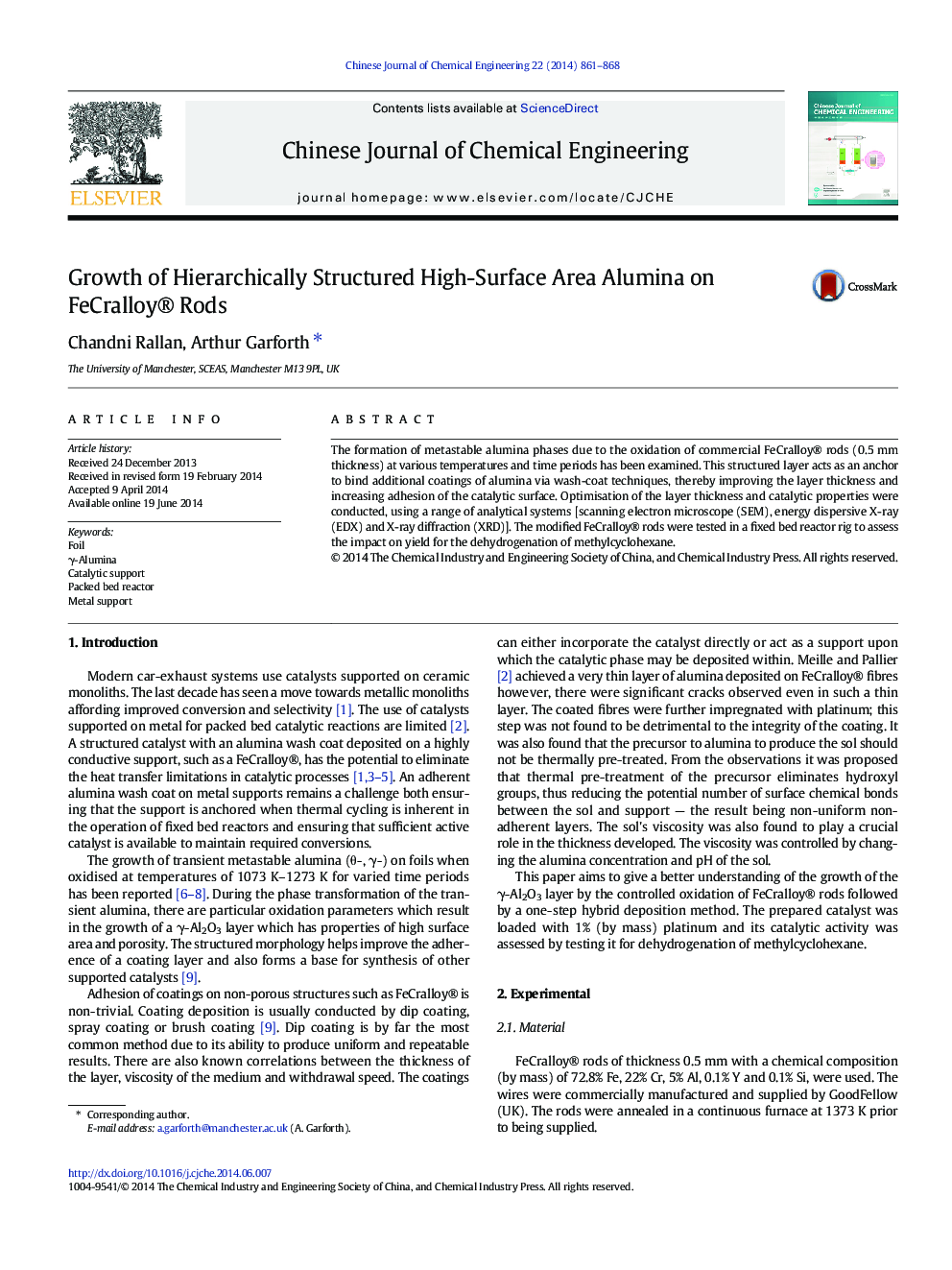| Article ID | Journal | Published Year | Pages | File Type |
|---|---|---|---|---|
| 167383 | Chinese Journal of Chemical Engineering | 2014 | 8 Pages |
The formation of metastable alumina phases due to the oxidation of commercial FeCralloy® rods (0.5 mm thickness) at various temperatures and time periods has been examined. This structured layer acts as an anchor to bind additional coatings of alumina via wash-coat techniques, thereby improving the layer thickness and increasing adhesion of the catalytic surface. Optimisation of the layer thickness and catalytic properties were conducted, using a range of analytical systems [scanning electron microscope (SEM), energy dispersive X-ray (EDX) and X-ray diffraction (XRD)]. The modified FeCralloy® rods were tested in a fixed bed reactor rig to assess the impact on yield for the dehydrogenation of methylcyclohexane.
Graphical abstractStructured metallic supports are currently found in catalytic converters for vehicles and similar, with a trend being towards the use of these in packed bed reactors to replace the pelleted catalyst structure. While the metal support offers exceptional heat transfer, the use of the system is currently limited due to surface adhesion issues. Optimisation of the layer thickness and catalytic properties were conducted, using a range of analytical systems (SEM, EDX, XRD). The modified FeCralloy® rods (d = 0.5 mm) were tested in a fixed bed reactor, under a range of operating conditions (T = 613 K–673 K, P = 0.1 MPa, VMCH = 3 m3·h− 1–6 m3·h− 1, WHSV = 0.2 h− 1–0.5 h− 1) to examine the impact on yield for the dehydrogenation of methylcyclohexaneFigure optionsDownload full-size imageDownload as PowerPoint slide
